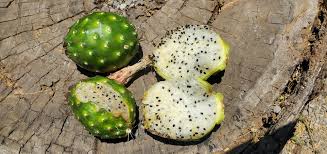
Stenocereus Queretaroensis ( White )
Stenocereus queretaroensis (White), commonly known as the White Queretaro Cactus, is a striking columnar cactus native to the central highlands of Mexico, particularly in the states of Querétaro and Guanajuato. Typically growing to heights of 10-15 feet (3-4.5 meters), it features tall, ribbed stems that can reach up to 4 inches (10 cm) in diameter, showcasing a pale, whitish hue that gives it its name. This cactus thrives in hot, arid environments, preferring temperatures between 70°F and 100°F (21°C to 38°C) and can withstand extreme heat, although it is sensitive to frost and should be protected from temperatures below 32°F (0°C). Propagation occurs through seeds or cuttings, and it requires well-draining sandy soil with infrequent watering to allow the soil to dry out completely. In late spring to early summer, the White Queretaro Cactus produces large, fragrant white flowers that bloom at night, attracting nocturnal pollinators like bats and moths. After flowering, it bears edible fruits known as pitayas, which are harvested in late summer for their sweet, juicy flesh. As a member of the Cactaceae family, Stenocereus queretaroensis (White) has adapted to store water in its thick, succulent stems, enabling it to thrive in its challenging desert habitat.